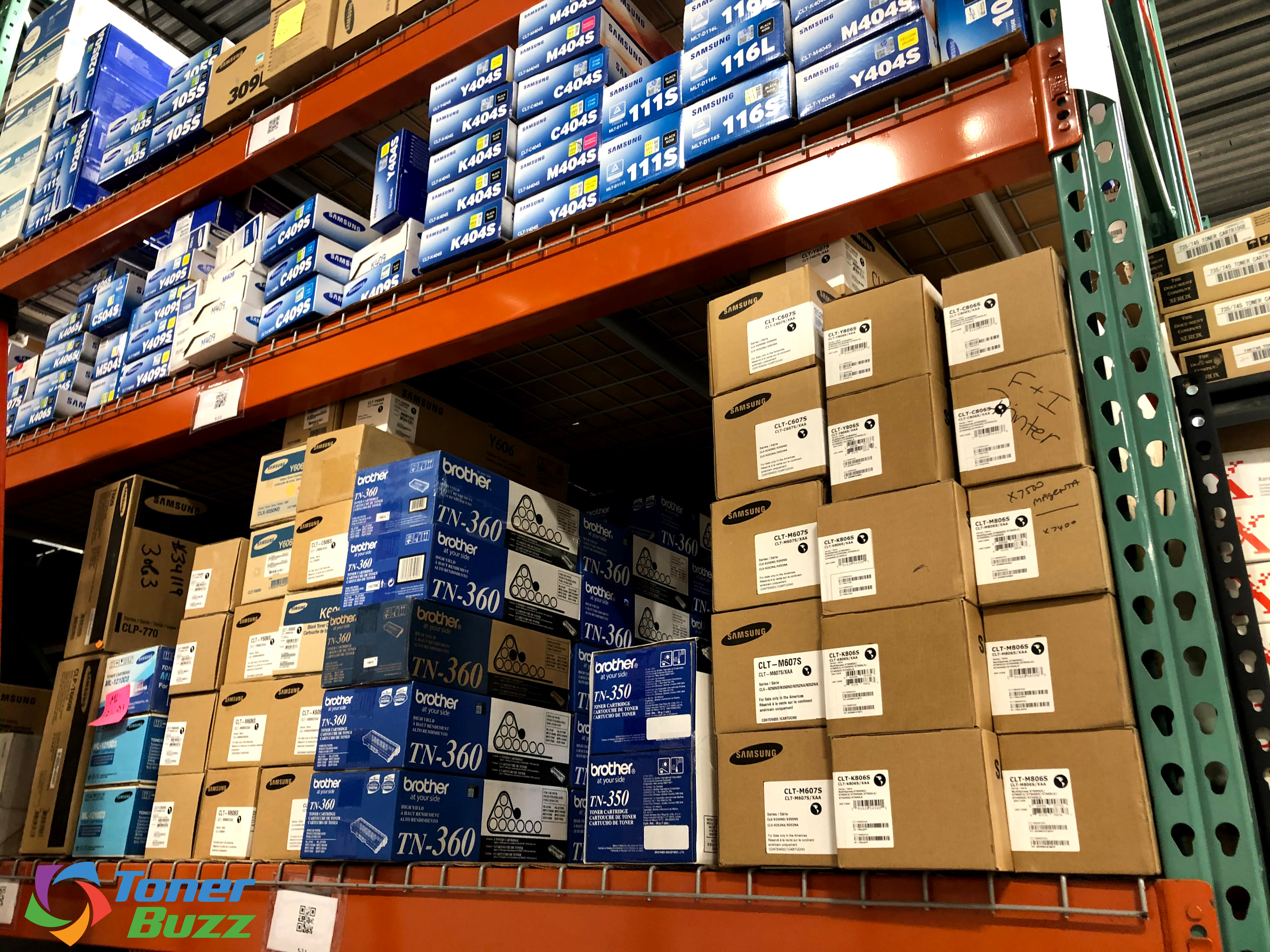How to Store Toner Cartridges Properly
05/17/2023

Toner cartridges are a rare breed of product. Toner cartridges do not have a fixed expiration date but can be affected by improper storage.
Toner cartridges must be stored correctly to reduce the risk of damage and ensure premium performance. The three main concerns are toner cartridge storage, light, heat, and moisture.
- Prolonged exposure to light can cause the photosensitive drum to wear out faster.
- Exposure to heat can cause the toner powder to melt inside the cartridge.
- Exposure to moisture can cause the toner powder to clump together.

Properly stored toner cartridges are happy toner cartridges
Storage Tips
1. Store at room temperature. Toner cartridges should be stored in rooms ranging from 60-75 degrees Fahrenheit. Anything above or below that temperature is either too cold or too hot. Storage at room temperature will keep toner powder particles inside the cartridges from clumping or sticking together.
2. Keep toner cartridges dry. Toner cartridges must never be exposed to moisture in any form. Humidity is the most common storage threat in regard to moisture. 50% relative humidity is ideal for toner cartridge storage. Avoid storing in damp basements. Any exposure to moisture will damage and degrade toner powder.
3. Keep toner cartridges in their original packaging. Storing them in their original packaging ensures toner cartridges are never exposed to dust or debris.
4. Keep away from bright light. Exposure to light can degrade the photosensitive drum's performance. Store toner cartridges in a dim or dark room. Drum units are specifically very sensitive to light, which is especially important if your toner cartridge is combined with a drum.
5. Avoid gaseous cleaning materials. Do not store toner cartridges in closets or cabinets next to gaseous cleaning materials, like ammonia.
Transporting Toner Cartridges
While toner cartridges are fairly simple to transport or ship, cartridges should be kept in their original packaging and stored upright to prevent leakage or damage. These transportation and storage tips apply to all major brands of toner, including HP, Canon, Epson, Xerox, and Brother, among others.
Toner Cartridge Lifespan
The lifespan of a printer toner cartridge can vary depending on brand, model, usage patterns, and print volume. Generally, toner cartridges are designed to yield a specific number of pages before needing replacement.
The manufacturer provides the page yield of a toner cartridge and is based on standard coverage levels, usually around 5% of the page covered in toner.
For example, a toner cartridge might have a page yield of 2,000 pages or 5,000 pages, indicating the estimated number of pages it can print under standard conditions.
It's important to note that the actual lifespan of a toner cartridge can vary based on individual usage patterns, such as printing text-heavy documents or graphics-intensive materials, which may require more toner. Factors like print quality settings, density adjustments, and toner-saving modes can also impact the overall lifespan.
Unlike ink, which can dry out over time and become unusable, toner typically does not expire. However, it is still advisable to use toner cartridges within a reasonable time frame to maintain optimal print quality.
When a toner cartridge starts to run low, the print quality may begin to degrade, such as producing faded prints or streaks. At this point, it is usually recommended to replace the cartridge to maintain optimal print quality.
Read also:
https://www.tonerbuzz.com/blog/hp-toner-expiration-date/
 Calculating arrival date
Calculating arrival date








